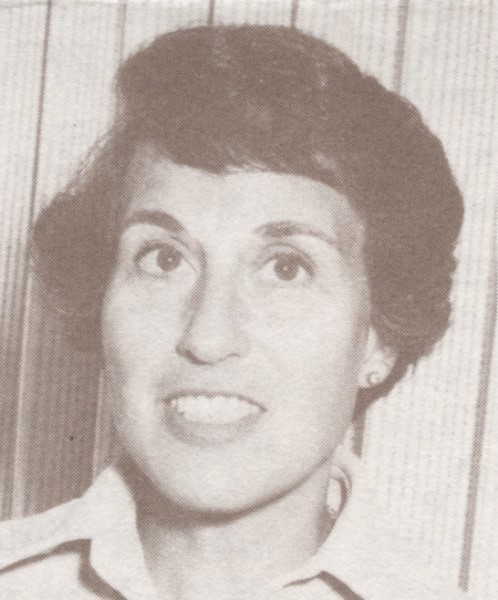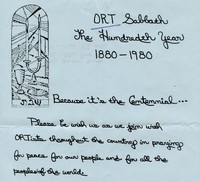In Paris, ORT school triggers R.I. memories
It was a lovely day in Paris as we made our way from our rental in the Marais to the Metro station at the Place de la Republique. Our destination: the Musée d’Orsay. The history of the Jews in Rhode Island was far from my mind, until I saw this sign: ORT école de travail (ORT vocational school). This was one of the ties that bind, a tie to a Rhode Island women’s organization devoted to ORT’s mission.
The word ORT is an acronym derived from the original Russian name of the agency. In 1880, Samuel Polyakov, Horace de Gunzberg and Nikolai Bakst petitioned Tsar Alexander II for permission to establish a fund to improve the lives of impoverished Jews crowded into the Pale of Settlement established by Catherine the Great. The fund would provide education and training in practical skills so that Jews, who were barred from many occupations, could earn a livelihood. Permission granted, ORT came into being.
In 1920, after the Russian Revolution, the offices were moved to Berlin and the name changed to ORT International. ORT remained active in funding education and training in the Soviet Union, but it expanded to other countries.
From the outset, ORT schools and programs were designed to meet needs in the countries served and adapt to changing economies in Europe, the U.S., Africa and Israel.
The American ORT Society, originally a male-only organization, was established in 1922, with active support from the Workmen’s Circle and segments of the Jewish labor movement.
The wives of two of ORT’s board members and some of their friends decided women also had a role to play, and so this small group founded a women’s auxiliary, later renamed Women’s American ORT.
Their first meeting was held in the kitchen of a home in Brooklyn, New York, on Oct. 12, 1927. Their first major event, a gala concert held at New York City’s Carnegie Hall, featuring violinist Efrem Zimbalist, came one year later and underscored their fundraising capabilities. The list of patrons included German-Jewish women and women originally from Eastern Europe, demonstrating their ability to bring together different sectors of the Jewish community for a common purpose.
Women’s American ORT (WAO) became an independent organization in 1940.
My mother, Chaya Segal, was a contributor to ORT in the 1930s, but no women’s affiliate existed in Rhode Island until late in the 1950s. At that time, according to Seena Dittleman, two women from WAO in Boston met with Rhode Island women at a home in Providence – and the Providence chapter came into being. The exact date and place are unknown as no minute books are available. A photo in the R.I. Jewish Historical Association’s archives, dated March 7, 1958, shows then-Gov. Dennis Roberts signing a proclamation declaring March 5 ORT Day.
Seena Dittleman was one of the charter members of the Providence chapter. The idea behind the Organization for Rehabilitation through Training appealed to her in a very personal way. Dittleman’s parents were very young when her grandparents immigrated and found opportunity in the U.S. Had they remained in Europe, her parents and perhaps even she might have attended ORT schools. Considering all the advantages that she and others of her generation of Americans had, Dittleman felt it was important that they work to assure opportunity for those in need.
For many women in the organization, their days centered around their children. Like Dittleman, they needed an “adult” activity, a satisfying outlet for their talents, capabilities and desire to work for a larger purpose. For them, WAO provided that outlet.
In addition to the fundraising, there was a social component to WAO – interaction with other women and meeting people who had common interests.
Carolyn Salk was new to Rhode Island when she was invited to a WAO meeting. She liked the program, and she met women who became friends. Like Dittleman, Salk was heavily involved in planning events and leadership roles.
During the 1960s, WAO flourished. Donor luncheons, card parties, holiday bazaars – all helped meet the quotas determined by the national WAO.
There were chapters in Providence, Cranston, Warwick, Newport and Fall River, and later in the East Bay. Some groups met in the evening, others during the day. Together they formed Southeastern New England District 1.
On March 20, 1978, Rhode Island WAO hosted a District 1 convention at the Marriott in Providence. Dittleman was vice president of the district at the time, while Salk and Sylvia Strauss were in charge of arrangements.
But by the end of the last century, attrition had taken a toll, and the once vibrant Women’s American ORT, like most women-only organizations, faded into history. Many of its members, however, have gone on to support other groups with goals similar to the Organization for Rehabilitation through Training.
GERALDINE S. FOSTER is a past president of the R.I. Jewish Historical Association. To comment about this or any RIJHA article, contact the RIJHA office at info@rijha.org or 401-331-1360.















